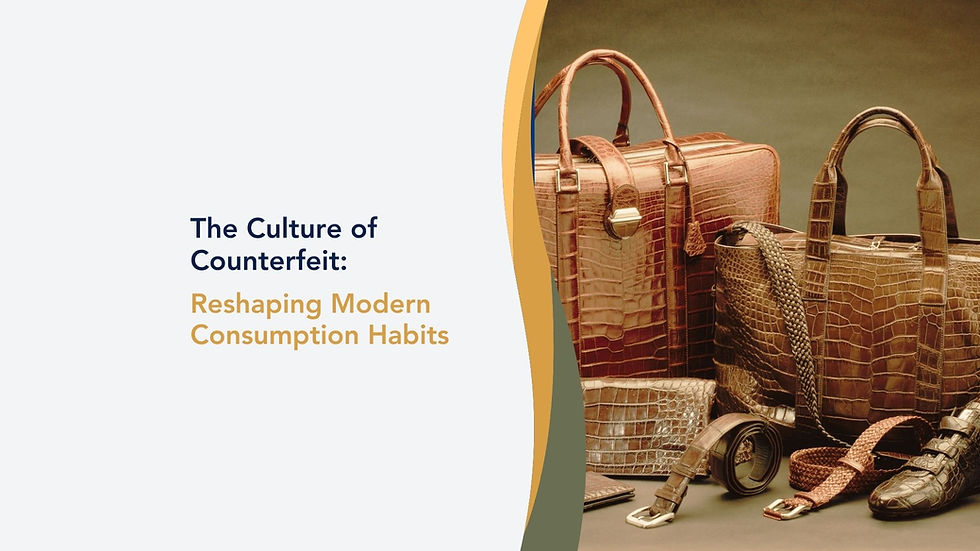The Culture of Counterfeit: Reshaping Modern Consumption Habits
- Juniper IP

- Feb 10
- 2 min read
Our consumption habits are constantly evolving, especially with the acceleration of digitalization in recent years. Today, it's not just about purchasing a product; it's also about the "experience" it represents. In this context, retail counterfeiting or imitation products are no longer merely low-cost alternatives but have become a new face of modern consumer culture. So, how should this rising trend be evaluated in terms of social values and consumption ethics?

Social Media and Counterfeiting: The New Generation of Consumption Motivations
Social media platforms, which center around visuals and fast consumption, play a significant role in the increasing attraction to counterfeit products among Generation Z and Y. Platforms like TikTok emphasize the "fun" and "affordable" aspects of fake designs, normalizing this culture. According to research, 71% of Generation Z and 67% of Generation Y admit to occasionally purchasing counterfeit products. This shifts the once “shameful” notion of counterfeiting into a new phenomenon blended with concepts like "mental economy" and "affordable luxury" among today’s youth.
Counterfeiting: Is It Just About Price?
While the prevalence of imitation products may seem like an economic opportunity, it carries both material and moral risks for consumers. Counterfeit technology and skincare products can pose serious health and safety hazards. Experts emphasize the fire risks posed by low-quality chargers and the potential harm of fake perfumes containing dangerous ingredients. Yet, despite these risks, consumers' attraction to counterfeit products cannot be explained solely by price advantages. It's also linked to a desire to attain a status symbol or keep up with trends on social media.
Cultural Evolution: The Perceptual Shift of Counterfeiting
In the past, imitation products were despised as "cheap and low-quality." Today, however, they've evolved into a more complex consumption strategy. The issue is no longer about mimicking a logo; it's about consumers opting for more accessible alternatives that resemble the original. For instance, the viral "Walmart Birkin bag" gained attention for its similarity to the real Hermès Birkin and quickly became popular due to its low price of $80. This reflects not only a product purchase but also a shift in the understanding of buying a lifestyle.
The Dilemma for Brands: Combatting or Adapting to Imitations?
Luxury brands are both defending and seeking to adapt to the rise of counterfeiting. While trying to preserve their brand identity, they are also considering producing more affordable alternatives to meet consumer demand. For instance, the automotive sector attempts to balance this by using design elements of high-end vehicles in more economical models. However, this approach may jeopardize a brand’s established image.
Is Counterfeiting Ethical? A Crossroads
The central question for consumers is: Is seeking "easier" ways to obtain a product ethical behavior? Or is this merely a side effect of fast consumption culture? It appears that there is no clear answer to this question. However, the rise of imitation products demands the development of new strategies for both individuals and brands. This trend can be seen not just as an economic behavior but as an opportunity to rethink the consumption values of the modern age.
In conclusion, retail counterfeiting is not just a "market issue," but a reflection of a societal and cultural transformation. Consumers, brands, and regulators will likely have to reassess how they respond to this change.




Comments